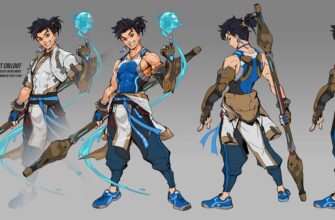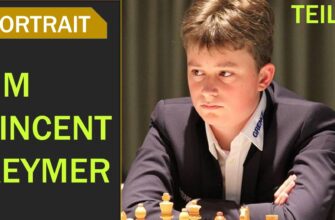In the expansive landscape of modern gaming, cooperative experiences are flourishing. Developers are pushing boundaries, creating intricate narratives and complex mechanics that demand synchronized teamwork. Yet, amidst this boom, a peculiar void persists: the truly accessible, genuinely collaborative game that effortlessly unites players across a significant age gap. Many titles, lauded for their co-op prowess, inadvertently erect invisible barriers, turning what should be shared joy into a frustrating exercise in skill disparity. This is precisely where Lego Voyagers confidently steps in, offering a refreshing perspective on what it means to play together.
The Co-Op Conundrum: A Parent`s Perspective
For parents who cherish gaming, the quest for a family-friendly co-op title often feels like navigating a digital minefield. While games like It Takes Two dazzle with their innovative dual-player mechanics, they often require a level of dexterity, puzzle-solving acumen, and patience that, let`s be frank, a six-year-old might not yet possess. The intricate contraptions and split-second action sequences, while thrilling for seasoned players, can quickly transform into a source of bewildered frustration for smaller, less experienced hands. Similarly, many indie co-op gems, while conceptually brilliant, might feature themes or gameplay loops — like high-stakes repossessions from monster-infested locales or precarious mountain scaling with cartoonish plunges to oblivion — that, while perfectly acceptable for older children, might induce a touch of anxiety or simply be too much for a younger, developing mind.
The core issue isn`t a lack of quality, but a misalignment of intent. Many “co-op” games are designed for two equally capable, often adult, players to overcome shared challenges, not for one player to guide or endlessly compensate for another. The result is often less “bonding experience” and more “unintentional tutorial session,” peppered with polite (or not-so-polite) sighs.
Enter Lego Voyagers: A Digital Canvas for Creativity
From the moment one steps into Lego Voyagers, the difference is palpable. This isn`t a race against time, nor a battle against encroaching hordes. Instead, it’s a serene, physics-driven playground built for two. Players embody charming, single-eyed Lego bricks, rolling through beautifully rendered, nature-inspired worlds that evoke the minimalist elegance of Light Brick Studio`s previous works. The objective is simple: solve environmental puzzles by building. And here lies its genius – the game offers no instruction manuals, no fixed blueprints, only loose bricks and the freedom to create.
Imagine this: confronted by a gap over water, your task is to build a bridge. Sounds straightforward, and it is. But the beauty lies in the execution. With a partner, you collaboratively select and place bricks, experimenting with shapes and sizes. There`s no timer ticking down, no impending doom. Just you, your co-player, and a pile of virtual Lego. This process mirrors the real-world joy of dumping a bucket of Lego bricks onto the floor with a child, then seeing what spontaneous, often delightfully imperfect, creations emerge.
Later puzzles escalate in conceptual complexity, demanding more thought than just a simple bridge. Picture needing to scale a steep incline, solved not by platforming precision, but by constructing a wobbling, cylindrical pole. One player anchors one end, the other pushes the other, inching up the terrain like a stiff, determined Slinky. It’s an approach that feels both ingenious and inherently Lego – a testament to problem-solving through playful, tactile experimentation rather than rigid, pre-defined solutions. The design intentionally keeps the barrier to entry low, ensuring that no player, regardless of age or skill level, is left feeling inept.
Beyond Gameplay: Cultivating Connection
Crucially, Lego Voyagers is a co-op exclusive experience. There is no single-player mode, and for good reason. Its entire aesthetic, from the gentle, lo-fi soundtrack that instantly soothes to the organically constructed environments, is meticulously crafted to foster a sense of shared intimacy and collaboration. It`s designed to be a comfortable digital space where two individuals can simply enjoy each other`s company.
The game thoughtfully approaches its audience, much like a Studio Ghibli film. It trusts its younger players to engage with thoughtful, if simple, challenges, and respects the intelligence of both child and adult. It allows its world to breathe, inviting exploration and quiet contemplation, rather than resorting to the loud, saccharine, and often exhausting sensory overload seen in other “family-friendly” media. It prioritizes the quiet satisfaction of shared discovery over the frantic rush of completion.
The Enduring Magic of Lego, Reimagined
Growing up, the meditative process of building with physical Lego bricks—the satisfying click of connection, the methodical following of instructions, or the sheer joy of unguided creation—was a pathway to a unique flow state. Lego Voyagers manages to capture this very essence, translating that tactile, mindful experience into a digital realm. It`s a game that understands the deep-seated satisfaction of building something, anything, together.
For parents, this means a chance to genuinely connect with their children on their terms, engaging in a shared activity that is both stimulating and deeply relaxing. For children, it`s an introduction to collaborative problem-solving in a non-stressful, endlessly creative environment. As Lego Voyagers prepares for its multi-platform launch on September 15, it stands poised to redefine family co-op, offering an antidote to digital chaos and a welcoming space for true, shared imaginative play.








